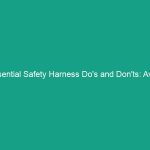Introduction
Good morning team! Today, we’re diving into an essential topic that impacts all of us in our daily operations: effective pressure regulation in HSE practices. Understanding how to manage pressure correctly is not just a technical skill; it’s a critical Safety measure that protects everyone in the workplace.
Why is this important? Pressure regulation can prevent accidents, ensure equipment functions correctly, and maintain a safe work Environment. Let’s explore the must-know tips that will help us all work safer and smarter.
Understanding Effective Pressure Regulation
Effective pressure regulation refers to the processes and techniques used to control and maintain the pressure of gases and liquids within systems. This is crucial not only for operational efficiency but also for Safety.
Understanding pressure regulation is vital because improper pressure can lead to equipment failure, leaks, or even explosions. Many employees may think that pressure regulation is only relevant to specific jobs or industries, but it impacts our work across various sectors. Misconceptions often arise, leading to complacency about pressure management. Remember, every team member plays a role in maintaining safe pressure levels.
Key Hazards, Risks, and Safety Considerations
When it comes to pressure regulation, several Hazards and risks can arise:
- Overpressure: Excessive pressure can cause equipment failure, leading to spills or explosions.
- Underpressure: Insufficient pressure can cause equipment to malfunction, affecting workflow and safety.
- Leaks: Pressure changes can lead to leaks, creating hazardous environments and exposing employees to harmful substances.
- Equipment Failure: Poorly maintained pressure systems can lead to unexpected breakdowns, increasing downtime and safety risks.
Ignoring these risks can have real-world consequences, such as accidents that result in injuries or fatalities. It is crucial to recognize these hazards and understand their implications on our daily operations.
Best Practices, Procedures, & Actionable Advice
Now, let’s discuss some Best Practices for effective pressure regulation:
1. Regular Maintenance
Ensure that all pressure-regulating equipment undergoes regular maintenance checks. This includes:
- Inspecting valves and regulators for wear and tear.
- Calibrating pressure gauges to ensure accurate readings.
- Cleaning and replacing filters as necessary.
2. Training and Awareness
All employees should receive comprehensive Training on pressure management techniques. This training should cover:
- Identifying pressure-related hazards.
- Understanding the Operation of pressure-regulating devices.
- Emergency Procedures in case of pressure-related incidents.
3. Use of Safety Devices
Incorporate safety devices such as:
- Pressure relief valves to prevent over-pressurization.
- Automatic shutdown systems for malfunctioning equipment.
- Alarm systems to alert staff of pressure irregularities.
4. Real-Life Example
Let’s consider a case study: A manufacturing plant experienced a significant equipment failure due to an overpressure incident. The absence of a pressure relief valve led to catastrophic consequences, including injuries and substantial financial loss. After this incident, the company implemented robust training programs and introduced regular maintenance schedules for their pressure equipment, resulting in a marked improvement in safety and efficiency.
Regulations, Standards, and Compliance
Compliance with Regulations is critical in maintaining safety. Familiarize yourself with the following Standards:
- OSHA Regulations: osha provides guidelines for pressure systems to keep workers safe.
- ISO Standards: International standards for safety management can enhance your workplace practices.
- Company Policies: Adhere to your organization’s specific safety policies regarding pressure management.
Compliance not only protects employees but also minimizes the risk of legal repercussions and enhances overall operational efficiency.
Employee Engagement & Discussion
Let’s open the floor for discussion. What safety challenges have you encountered related to pressure regulation? Have you ever witnessed a pressure-related incident? Your experiences can help us all learn and improve our practices.
Conclusion & Key Takeaways
In summary, effective pressure regulation is a vital aspect of our HSE practices that directly impacts our safety and well-being. By following Best Practices, adhering to regulations, and fostering an open dialogue about safety, we can create a safer workplace for everyone.
Remember, safety is a shared responsibility. Let’s prioritize these practices and ensure that we all contribute to a secure working environment. Thank you for your attention and for your commitment to safety!


